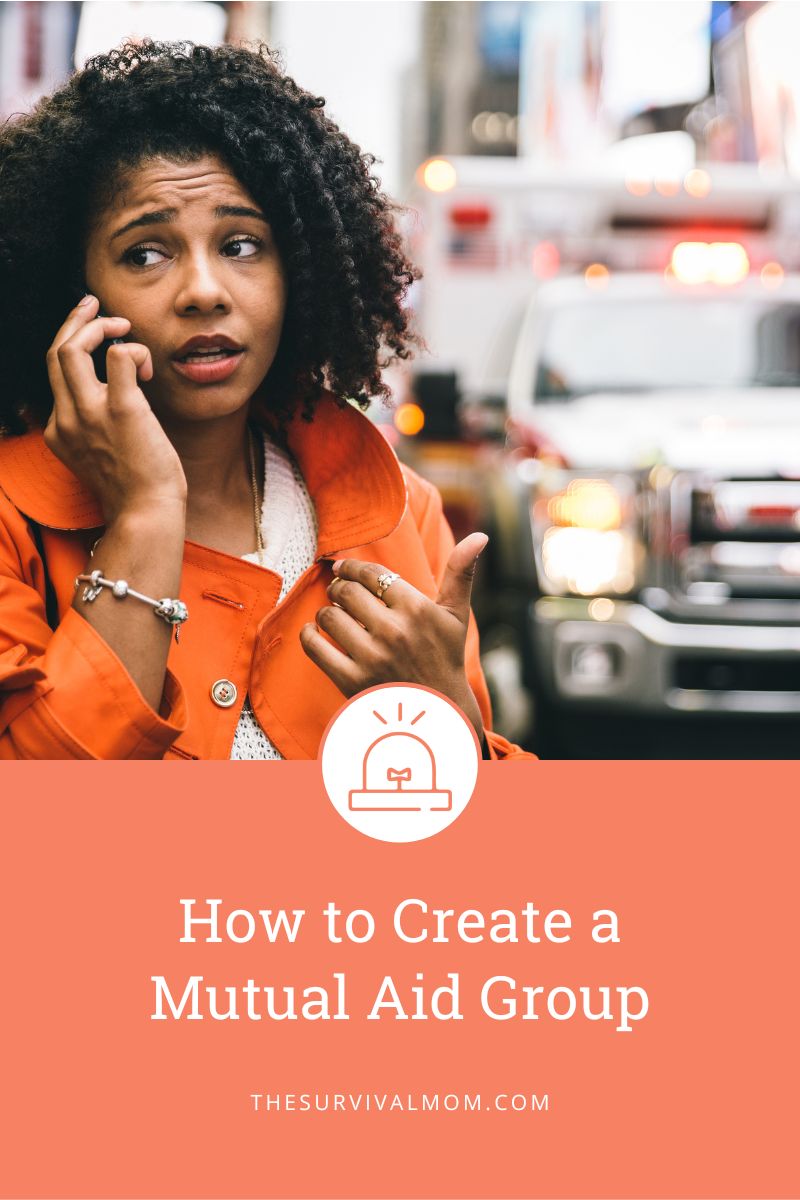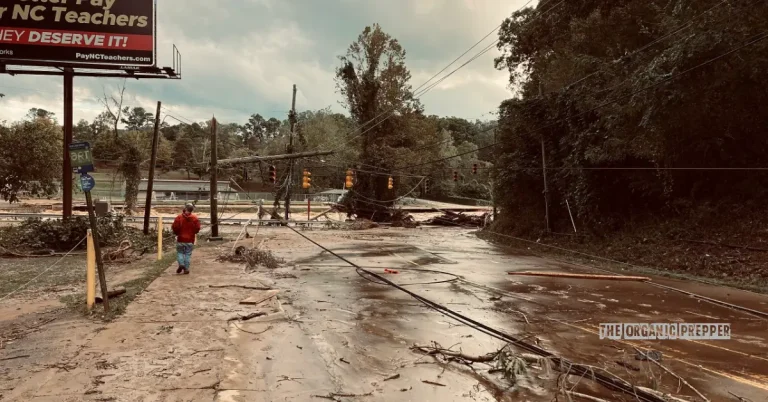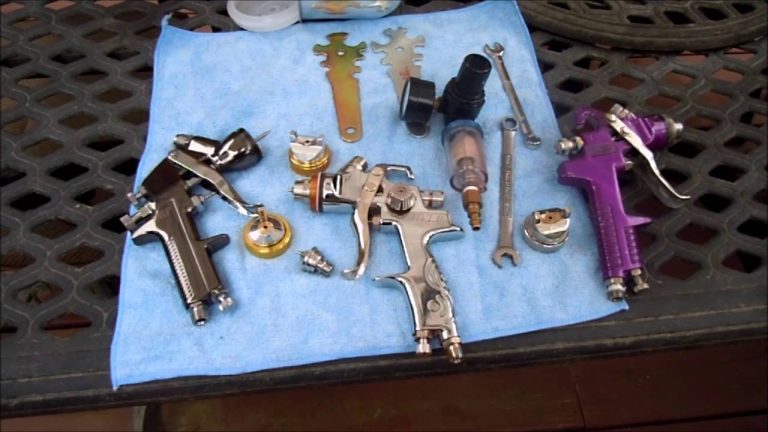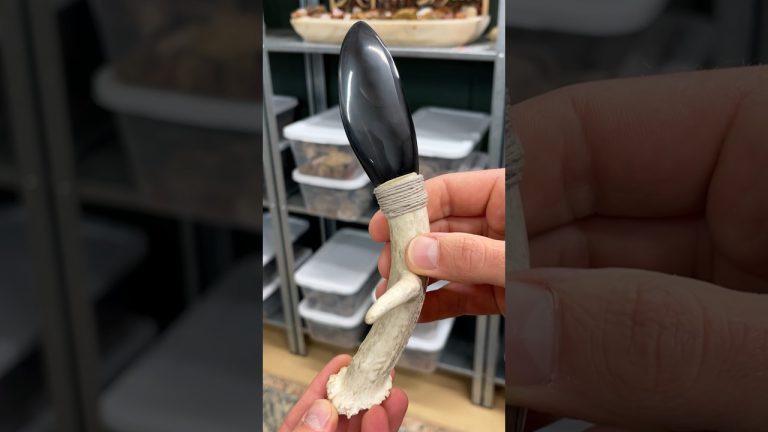Some of the links in this post may contain affiliate links for your convenience. As an Amazon associate I earn from qualifying purchases.
*This is a guest post by Jim Acosta.
For many of us, it’s hard to ask for help. I know. I’ve spent time as a cop, volunteer firefighter, Emergency Medical Technician, and wildland fire hand crew member. We pride ourselves in our preparedness for emergencies; in many cases we are the go-to people in our social circle for what to do in case of…fill in the blank. Or at least we know who to ask or where to look up the answer. But as strong as we are, there are many things in nature and in our industrialized world that are much stronger. In some cases, we need to call for help…for backup. That’s where a mutual aid group comes in.
What is a Mutual Aid Group?
Formally, a mutual aid group is a community-driven organization or network where individuals come together to provide support, assistance, and resources to one another in times of need. These groups operate on the principle of reciprocity and solidarity, with members contributing their skills, knowledge, time, and resources to help fellow members facing various challenges or crises.
Simply, it’s about cooperating to serve the needs of the members.
These neighborhood networks aren’t a new idea, and during the COVID-19 pandemic mutual aid went mainstream. For example, many areas had Facebook groups where people would post where toilet paper, certain groceries, or other scarce commodities could be found, or requesting info on where some needed item could be found. Those Facebook networks were a form of mutual aid group. People were essentially calling for help, for backup.
Perhaps, though, you feel uncomfortable asking for help. I get that. It’s not uncommon. Let me share a story that might help.
…it’s about cooperating to serve the needs of the members.
It’s OK to need some backup!
Remember that every day, police and fire departments send their people out to dangerous situations. In most cases, one unit (police car, fire truck, ambulance) can handle the situation by themselves with little problem. If you think you have a hard time asking for help, just imagine the egos needed by cops who respond to an armed robbery, or firefighters entering a burning building. In those lines of work, you only ask for help if you really need it: ask for it too often or unnecessarily, and you get a bad reputation.
But when they do really need it, calling for backup allows that first responding unit to stay at the scene and finish the job…with a little help (sometimes with a lot of help). In some cases, that first unit can anticipate trouble before it actually happens and ask for backup as a precaution. For instance, a cop might pull over the car of a known felon, on parole for assaulting a police officer. Common sense would be to call for backup, knowing this person is a high-risk contact.
A Real-Life Example of Needing Backup
Here’s an example from back in the day when I was a street cop. I was driving through town on a two-lane road when an old El Camino heading toward me in the other direction suddenly lost its load of furniture into the road just as I passed them.
I turned on my red and blue lights and did a U-turn, pulling in behind them where they had already pulled over on the shoulder. Calling in the license plate and location to my dispatcher, I got out of my car to talk to the occupants, a couple in their 30’s. Having moved many times in my life, I wasn’t in an enforcement frame of mind; I just wanted to make sure they could safely load their cargo back in the car. Our conversation was friendly and light.
Just about the time that I looked in the car and saw the screwdriver sticking out of the steering column, my dispatcher notified me that it was a stolen vehicle and sent another unit toward my location for backup. With a smile on my face, I quickly handcuffed the male and sat him on the curb about the time that the backup car arrived. In this case, a seemingly innocent contact unexpectedly became potentially dangerous, justifying the backup.
Not Just for Cops and Firefighters
Now that you understand what I mean by “backup,” let’s apply the concept to surviving disasters. Most preparedness advice treats each family as an individual unit. Yet the truth is that most of us have a network of neighbors, friends, and relatives that could potentially help us in various ways in a disaster–a mutual aid group. And each of us can make a real difference providing backup to our social circle when they are jeopardy.
Mutual Aid Groups & Two Categories of Disasters
In general, there are two categories of disasters:
- No-notice disasters like earthquakes and toxic train derailments
- Prior-notice disasters such as floods, hurricanes, and wildfires
There are some calamities like floods that can fit in both categories (i.e. flash floods vs. slow-rise floods), but those tend to be location-specific. You generally have one or the other in a particular place. You’ll also need an evacuation plans for both categories.
Prior-notice Disasters
Let’s talk about prior-notice–or planned for–incidents first. The nice thing about these is that planning a backup strategy for for a prior-notice disaster also yields an easy approach to the no-notice backup. We want our backup to be able to provide help when we need:
No-notice Disasters
The preparation that you put in place for prior-notice emergencies will really pay off for no-notice–or urgent– incidents.
No-notice events will often cause communications difficulty when they suddenly occur, because the natural reaction of most people is to immediately call their kids or other loved ones. Cellular networks quickly become overloaded with voice traffic, but they can often still accommodate text messages. With a critical contacts list, your group should be able to gain awareness of everyone’s circumstances, and learn who needs help.
Before a disaster strikes, put a critical contacts list together. Click To Tweet
This contact list is simply a list of who you might want to call on to help in an emergency. However, it’s not enough to just put these names and phone numbers on paper. It’s very important to have a conversation with each individual.
This contact list is simply a list of who you might want to call on to help in an emergency.
How to Create the Critical Contacts List
Once you have a fairly solid list of people you think would be willing to help in a disaster, host a dinner party or potluck (at least with those within a reasonable distance) where you can not only continue the conversation with individuals, but foster connections among the group.
As a personal example, I had no idea that my second cousin was a fairly serious ham radio enthusiast. I found out by chance at a family get-together. Talk about a valuable skill set in a disaster! This would be a great resource to foster communications within the family during an emergency and to keep tabs on info from other hams.
The point is that you won’t know if you never ask.
Rally neighbors, family, and friends to participate
Before the main course is served at your dinner party, make sure you give each of your guests an agenda of what you hope to accomplish, and a list of contact info for all of your guests. It may seem over the top, but it will focus the group and show them what you want to do. Keep it short and to the point. You can joke with the group that you’re holding dinner hostage until the task is complete. The most important thing is to state your interest in helping organize your neighbors, family and friends to be able to help each other in emergencies.
The contact list is a critical part of your effort; even if an attendee doesn’t enthusiastically buy in to your suggestions, chances are they will hang on to the contact list. If you put forth a little more effort and make it into a laminated card, those odds go way up, as do the odds that the list will be available to each member of your group when it hits the fan. A laminated card, small enough to fit inside a wallet, helps insures that everyone has those important contacts no matter where they are.
Alternative Communication Methods
In addition to phone and text, you could consider using a group communications tool like Slack.
Using a tool like Slack within a mutual aid group can offer several advantages:
- Centralized Communication: Slack provides a single platform for group members to communicate, making it easier to stay organized and keep everyone informed.
- Real-Time Interaction: Instant messaging allows for quick updates and responses, facilitating swift decision-making and coordination.
- Segmented Channels: Channels can be created for different topics or tasks, helping to streamline discussions and prevent information overload.
- Document Sharing: Slack supports file sharing, making it convenient to share important resources, documents, and guides.
- Searchability: Messages and files are searchable, enabling easy retrieval of past information and discussions.
- Notification Control: Members can customize their notification settings, ensuring they receive relevant updates without being overwhelmed.
- Remote Collaboration: Especially useful for virtual mutual aid groups, Slack enables members to collaborate regardless of their physical location.
Slack channels are also has a neat feature. They’re useful in the following ways:
- Announcement Channel: For sharing critical updates, news, and important announcements.
- Resource Sharing Channel: A place to share documents, guides, and useful links.
- Task-specific Channels: Create channels for specific tasks or projects.
- Discussion Channels: Channels focused on specific topics, enabling focused conversations and preventing clutter in the main chat.
- General Chat: A space for casual conversations, fostering a sense of community among members.
The downside, of course, is that it’s technology dependent. Reliance on a digital platform after a disaster can be risky because of technical issues or outages. However, it can be useful part of your pre-disaster communications.
One Last Thought About Mutual Aid Groups
Just as my dispatcher sent backup to me whenever I was anticipating problems, you can anticipate many problems yourself (or even as a group). Most weather-related problems have some warning time, and with all of the warnings available from the National Weather Service and various phone apps, you should have time to alert your people. Think you’ll need backup? Time for a slumber party at your place. Get your crew together, make a plan, and you’ll be more ready than 99% of your neighbors.
Who would you consider including in your mutual aid group?
Originally published May 18, 2106.
I’m the original Survival Mom and for more than 11 years, I’ve been helping moms worry less and enjoy their homes and families more with my commonsense prepping advice.
















